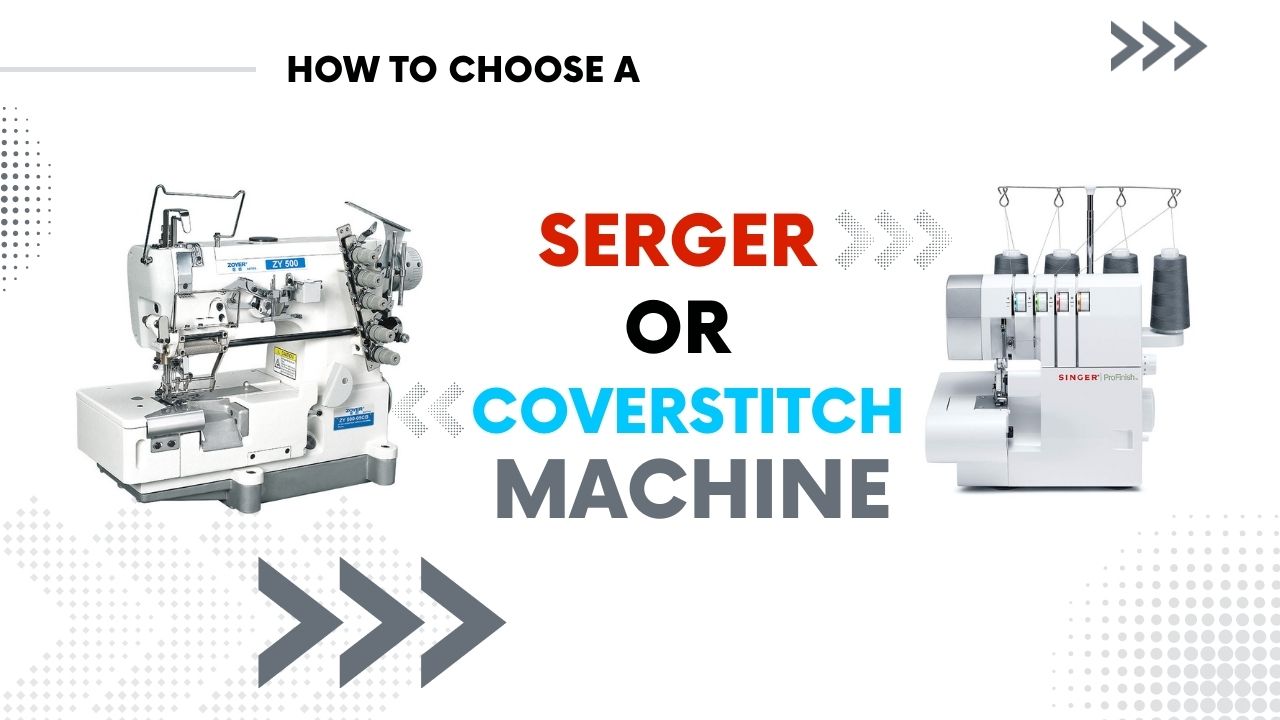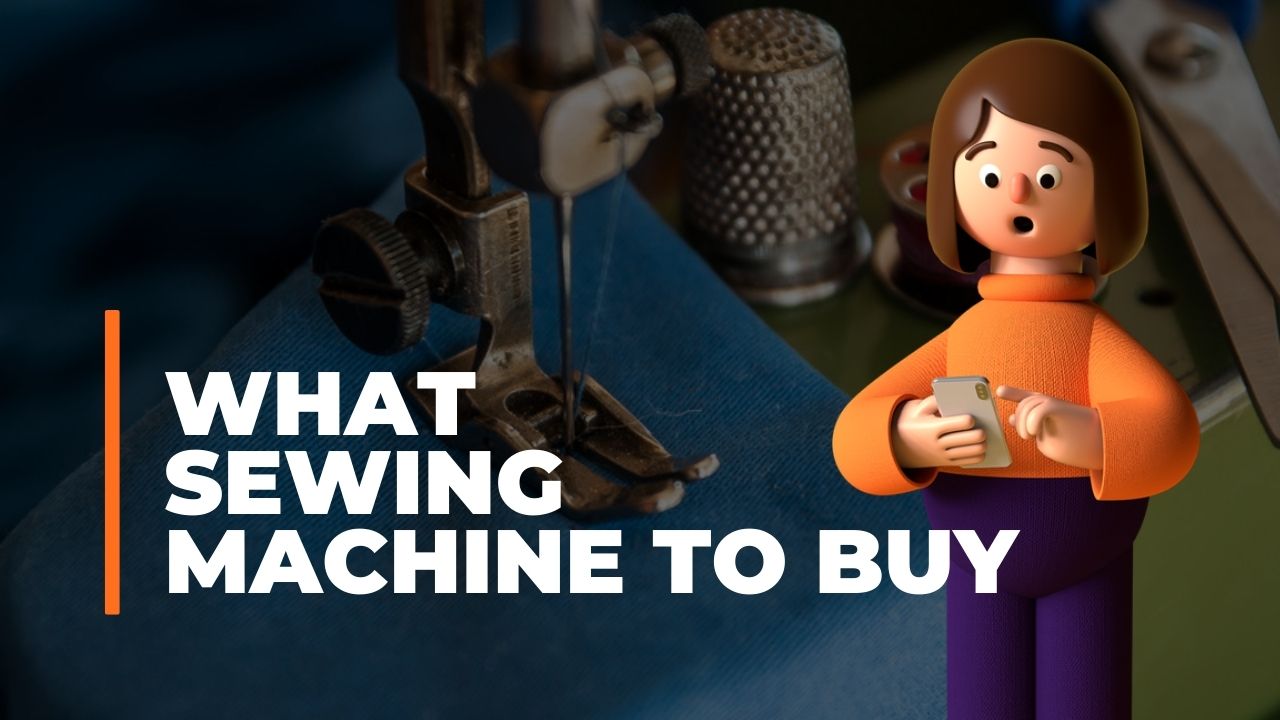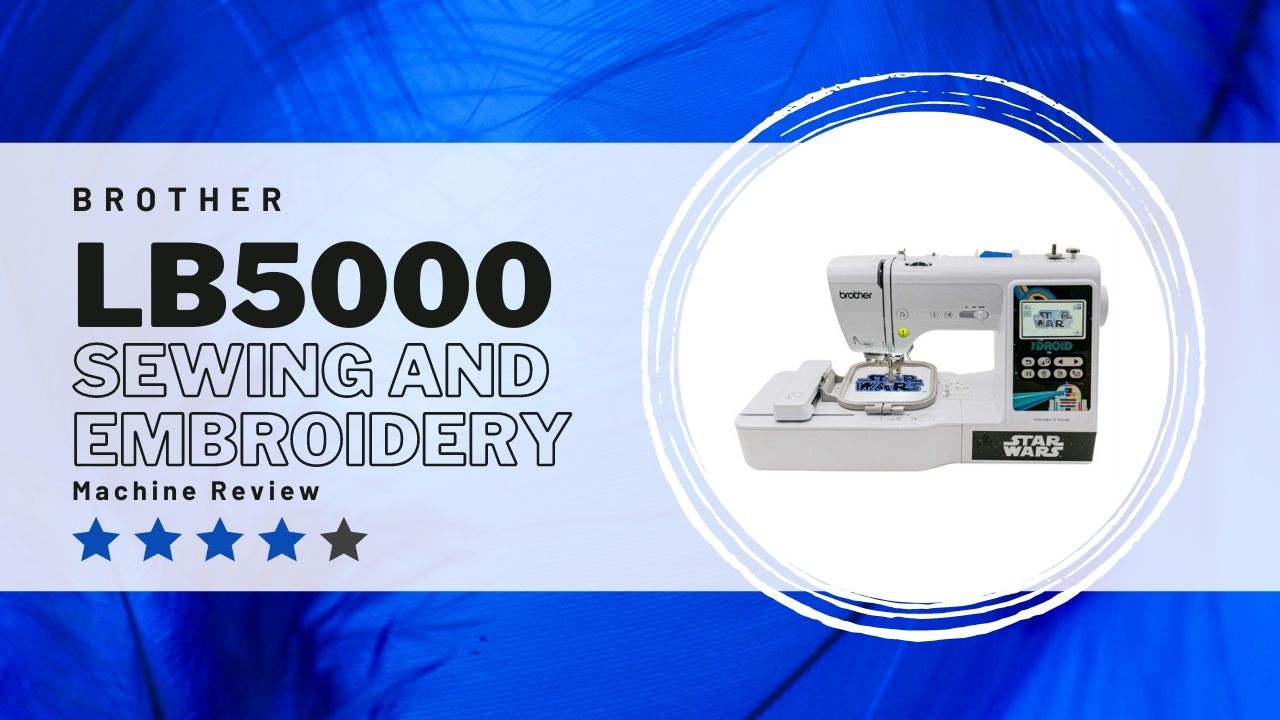Serger and coverstitch machines are specialized sewing machines vastly different from those we use. They have other functions and features suited for the sewing activity for which they are made.
The common question for many sewists is whether to go for a serger or a coverstitch machine.
It will depend on many factors, for both can offer excellent help in giving your sewing project a refined look.
Serger vs coverstitch, which one should you get? Before comparing them, let us first discuss what a serger and coverstitch machine offers to the table.
What Is A Serger?
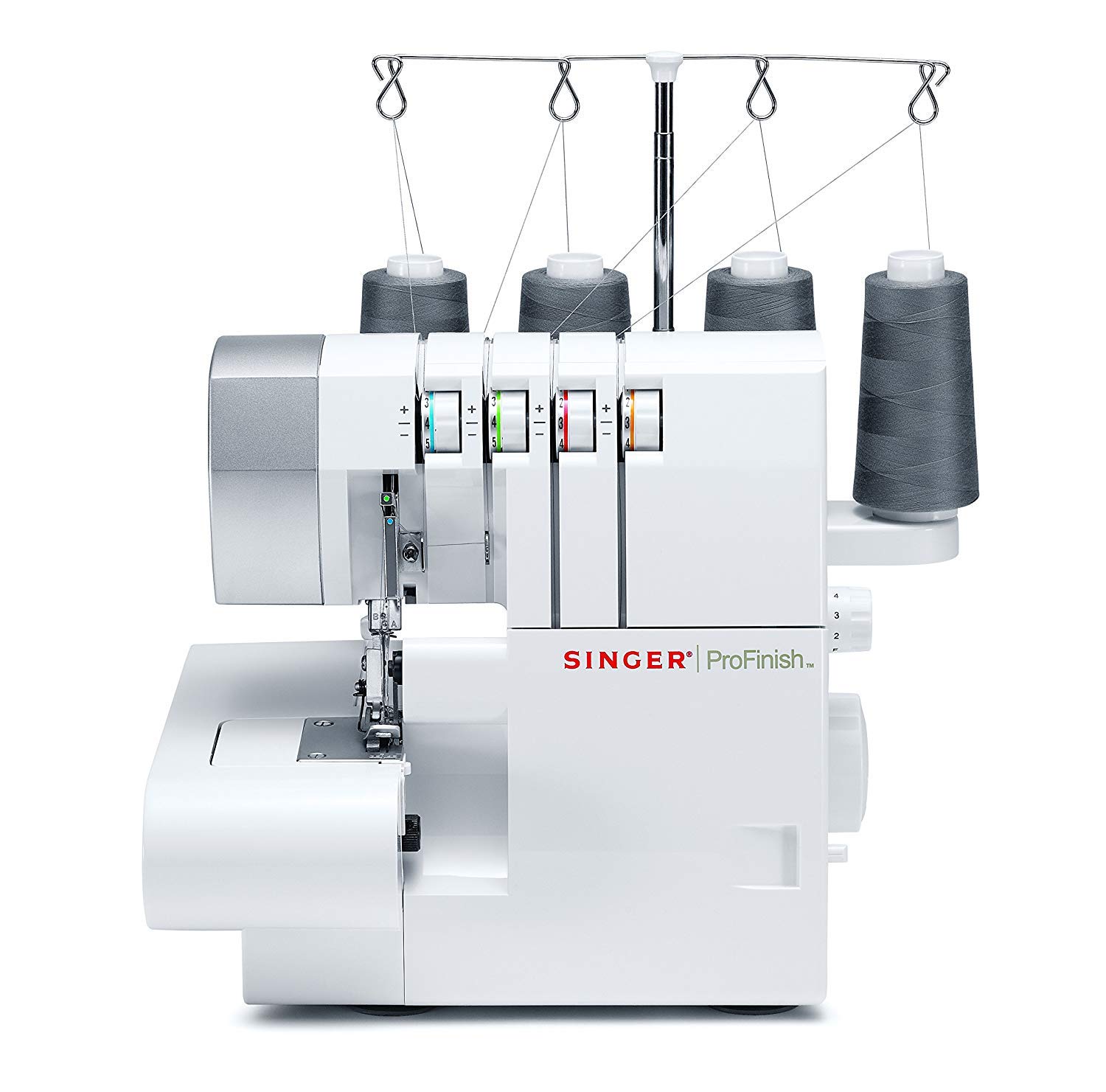
A serger or an overlocking machine is a vital tool for many sewists and seamstresses, especially those dealing with garments and clothes.
It has unique functions and features that make the sewing activity more effortless and allows the user to deal with many sewing projects.
Two features may as well define the essence of a serger: it trims the fabric while at the same time sewing them. This time-saving operation, doing those two activities instantly, is one reason it appeals to many sewists.
All sergers have blades and knives attached to them, necessary for trimming and cutting.
Some, however, have a retractable knife, meaning you can disengage the knife if you do not want to use it and use the machine for some stitches.
They can give the sewist the added advantage, making the serger more versatile and available for other purposes.
While others have a retractable knives, some have wide blades that can cut a wide area of fabric or material.
The serger stitch encloses the raw edge of a sewing project and is perfect for knitting and closing the fabric.
Aside from utility and time-saving operation, a serger, mainly due to its type of stitches and the trimming process, can give your material an authentic, refined look.
Another thing with the serger: it can work on many layers of fabric and deal with light fabrics and heavy materials.
This feature is essential, especially for sewists dealing with different kinds of sewing projects and materials.
Sergers are fast sewing machines. It can do up to 1,700 stitches per minute, and most sergers, on average, have more than a thousand stitches per minute.
With speed, high-quality stitching, and time-saving cutting and stitching operations simultaneously, a sewist can handle many sewing projects of differing kinds in a short span.
It is why most garment makers and dressmakers use a serger, aside from the standard sewing machine.
Related: Want to Know About the Strongest, Most Durable Threads on the Market?
What Is a Coverstitch Machine?
A coverstitch machine has only one essential function: to provide a superb finish to any garment or clothes by sewing or making stitches on a stretchy fabric.
That kind of finishing makes a sewing project unique and gives them the appearance of being handled by a professional seamstress or dressmaker.
You may wonder: why a particular machine for a seemingly simple task? Well, for one, a superb finish on a hem is no simple task; it is, in fact, one of the trickiest aspects of sewing.
Much more so if you are dealing with stretchy fabric, all seamstresses will tell you they are the most difficult ones.
And it is simple yet has versatility in it. You can use two or three needles in it and have a different configuration of stitches, and you can make narrow or wide rows of stitches, depending on your preference.
The result is beautiful, lovely, decorative stitches, yet a coverstitch machine’s seam is strong and does not easily succumb to pressure or intentional pulls.
That is what makes the coverstitch machine preferable; they give a sewing project that competitive edge, in terms of looks, appearance, and durability, all because of its stitches.
A serger and a coverstitch machine have vital functions; both are needed by sewists, whether beginners, intermediate or advanced users, especially if they want to give that professional, competitive edge to their sewing project.
Serger vs. Coversttich: What Are The Similarities?
Among the similarities between the two sewing machines are the following:
The Function
Both differ from a regular sewing machine talking of function and are closer to one another than to a standard sewing machine.
Both sewing machines deal primarily with finishing, with vital differences.
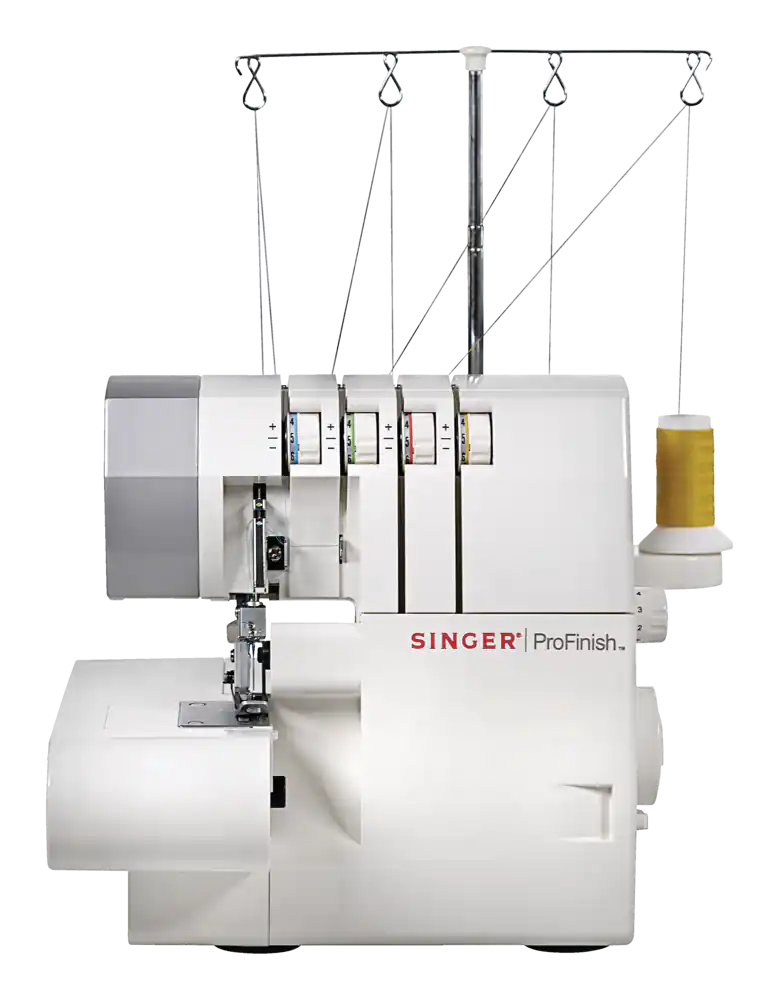
In any case, you will use either of the two to finish the rough edges of the sewing project and deal with the hems.
The Differential Feed And Control Dial
The differential feed is essential in dealing with hems; it can make corrections on seams and can deal with the fabric material to ensure accurate stitching and that the fabric will not be wavy after you complete the stitches.
A control dial is necessary to adjust the differential feed properly. Different feed and control options are present in a serger and coverstitch machine.
The Needles
Both serger and coverstitch machines use needles specific to the sewing machine; they seldom use the ones you can find in a standard or a regular sewing machine.
The needle requirements will depend on the model or the brand of either an overlock machine or a coverstitch one.
The Thread
Since both machines deal with hems and finishing, having durable thread is a must, as there are chances of the knit going loose if you use a substandard one.
Hence, you can expect both machines to require durable, excellent threads for their task.
Free Arm
Both might deal with sleeves, so a free arm is usually included in a serger or a coverstitch machine. Not all, though, have a free-arm component; others do not.
Serger Vs. Coverstitch: What Are The Major Differences?
Among the significant differences between the two are the following:
Specific Function
A serger can do two operations at once: It can sew and deal with hems as it cuts the excess fabric.
A coverstitch machine, meanwhile, can sew like a regular sewing machine and be a chain stitch machine, but the purpose is to do the superb finishing touches by closing the edges and providing nice stitches.
The Features
Sergers have knives for trimming and cutting the fabric, while coverstitch machines do not have blades.
A coverstitch machine can have up to three needles for stitching; while most sergers have twin needles, some of the latest versions can have more.
For the looper thread, a coverstitch machine only has one looper, whereas a serger has two.
The Working Area
On average, the sewing area provided by a coverstitch machine is more extensive than that offered by a serger.
Serger, however, usually compensates by having long extended tables, and some sergers recently released also feature a larger working space.
How To Choose A Serger

If you are looking for the best serger machine, you need to look at the number of threads. Some have three or four threads, and others have more.
The more threads mean the more diverse and decorative the stitches, the better the finishing on the hems.
The knives and their quality and size are other things you must look at. Some have wider blades, while others have just enough length to deal with what is necessary.
It must do precise, accurate cutting so that you can work seamlessly. A substandard knife may have difficulties cutting through the fabric, which might delay your work and sewing project.
Other features, like stitch length, width, and tension, are essential to a serger. Difficulties in adjusting those features may affect speed, quality, and productivity.
Therefore, looking at those things when buying a serger is essential. A serger prides itself on its time-saving features, and it would be ironic if you were delayed or slowed down because some features are not up to the task.
It would be best if you looked at those things, but needless to say, you must also bear in mind the usual ones, like speed, power, durability, and threading features of the serger.
How To Choose A Coverstitch Machine
In looking for the best coverstitch machine, you need to look at the number of threads and have the one you need.
A coverstitch machine has up to three threads, but most have two; hence, we usually call them double coverstitch machines.
It would be best if you also looked at the adjustable tension, which is very important in handling different fabrics of different thicknesses and weights.
The presser foot and the differential feed must also be adjustable to accommodate different fabric types.
It would be best also to have a larger working area.
One significant difference between a serger and a coverstitch machine is the space, and it will not make sense to have a coverstitch with a small working area.
You will have trouble dealing with a diverse or more extensive sewing project if your coverstitch machine does not have a large area.
Final Thoughts
Although the two machines have similarities, they differ in a crucial aspect: A serger can cut fabric and overlock stitch simultaneously, but it cannot do the cover stitch.
A coverstitch machine precisely does that, though it cannot do the trimming of the fabric.
Everything, then, will depend on what you need. If it is essential for you to have the cutting and sewing done simultaneously to save time, then you can have a serger.
But if you need a machine that can do a cover stitch to have an excellent finish on your sewing projects, then the coverstitch machine is the one for you.
Both of them, however, can handle any seam, hem, or fabric edge.
But if you are serious about garments and dressmaking and cannot do without either, it is still best to have them both.
You can have far more significant benefits having both of them, as it can give your sewing project a tremendous edge in looks and quality.

